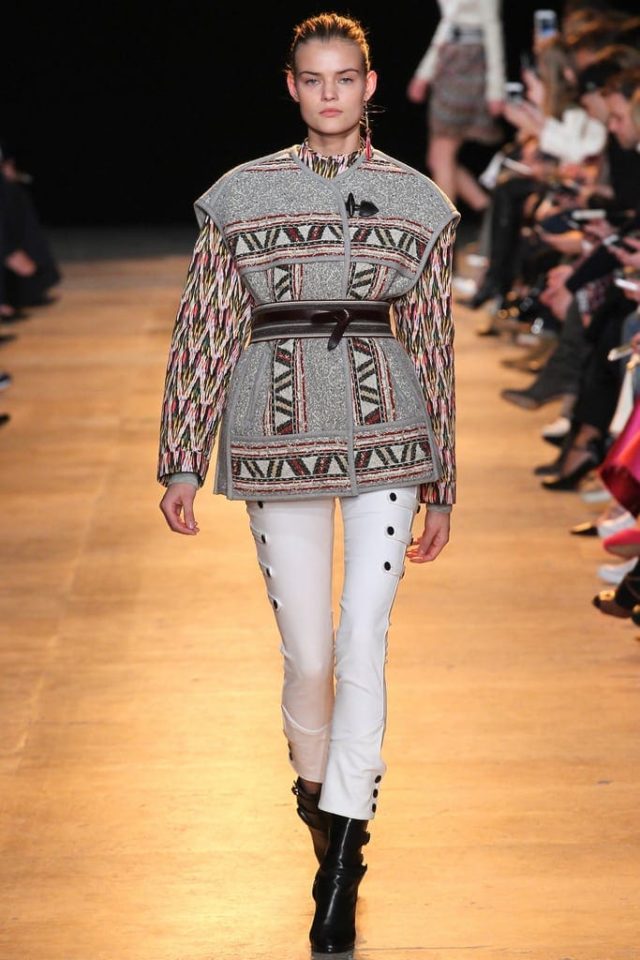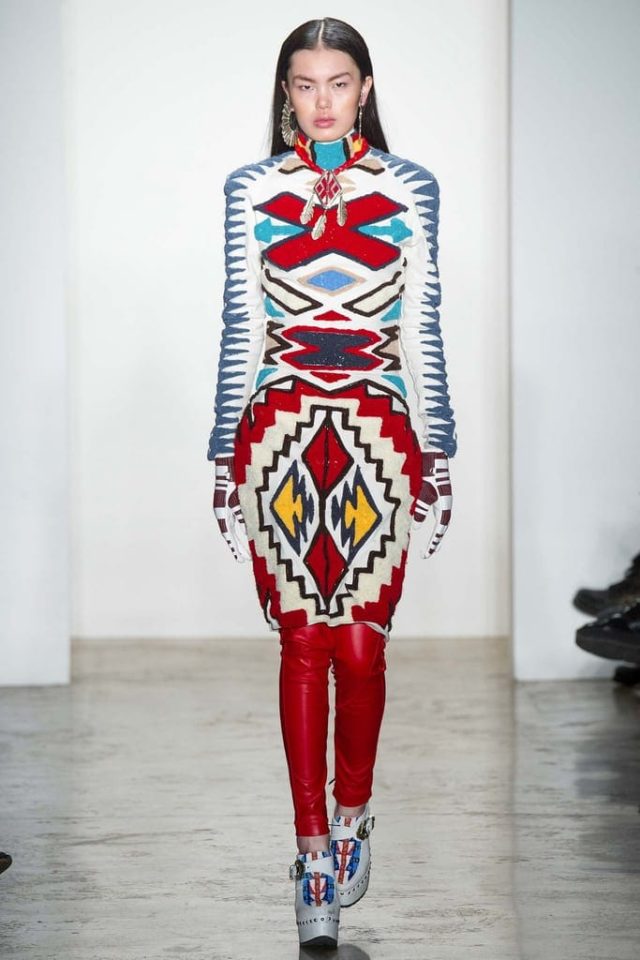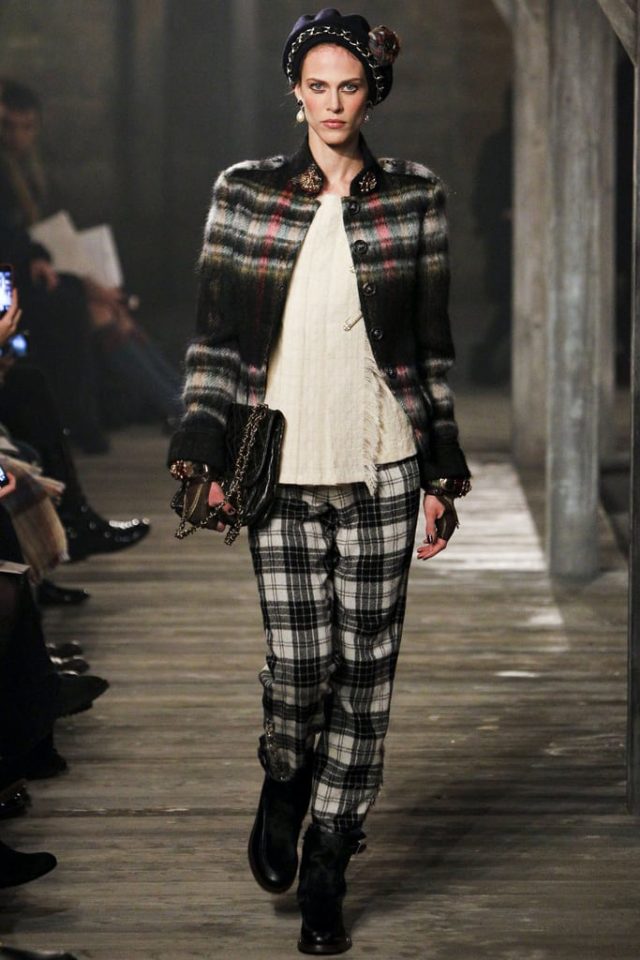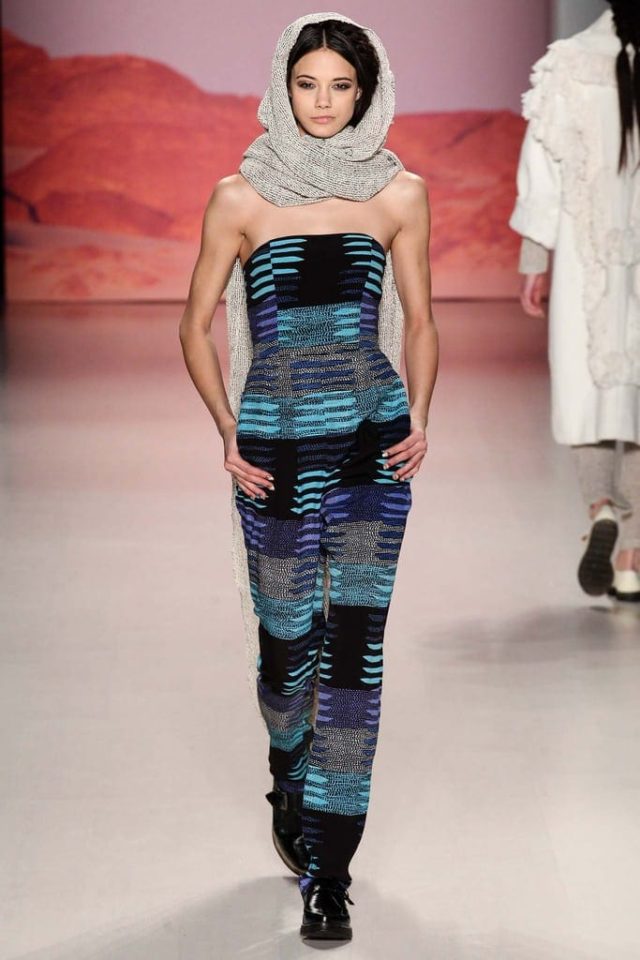Fashion Undressed: Plagiarism as Design Inspiration?

“It’s been done before.”
If you’ve watched any of the ubiquitous fashion design shows, you’ve heard coaches, mentors, and judges critique rising courtiers, telling them that their designs aren’t new.
“What goes around, comes around.”
Not just life advice, those of us who’ve been around tend to roll our eyes at the cyclical versions of trends we wore in our youth – sometimes twice.

When I saw The Guardian’s June 17, 2015 piece in the latest fashion plagiarism accusation, I wondered – again – where the line lies for a designer and her inspiration. In this case, women artisans in the Mexican Santa Maria Tlahuitoltepec community have accused French designer Isabel Marant of plagiarizing their native costume for her Fall 2015 collection. Blouses strikingly similar to those they make and sell in their village retail under Marant’s Etoile label as dresses for upwards of $300.

As each season’s runway rolls by, designers put out press releases and show notes citing their “inspirations.” Some are purposeful, like Karl Lagerfeld’s 2013 Dallas, Texas, Metiers d'Art show. In that case, Lagerfeld turned on “cowboys and indians” to recall and use Coco Chanel’s fascination with Texas. The designs, many of which reused stereotypical “western” motifs, were not received well by critics. They were considered uninspired and almost cartoony. Using a “Native American”-influenced graphic blanket as a coat didn’t turn anything on its design head. Unlike some of his contemporaries (think Givenchy’s Fall 2013 Bambi sweatshirt), Lagerfeld applied not a lick of irony or sarcasm.

Where is the line, then? Can a designer not see a shape, line, or color in a native costume or a previous season’s design and apply it to make it current? Artists (and many designers certainly fancy themselves as such, whether or not the rest of the world views them that way) use life and the world around them as springboards to their creativity. Art is exactly that: taking that which surrounds us and interpreting it as an expression of ourselves or our message. If fashion is art, can designers call on and bring native cultures’ art forms to the runways? When is inspiration an honor and a positive spotlight for those cultures, and when is it a designer profiting from an ancient artist’s creativity?









Copycat designs in fashion are hard to counter from a legal point of view. Of course when they’re done by a retailer and not an actual designer, it’s even less ethic. See this case to know what I’m talking about: http://www.edipous.com/ I just hope there is a karma court somewhere….
The discussion prompted me to research one of my own favorite brands, Minnetonka. They bill themselves as an “iconic American heritage brand,” and parlay that into international sales, as well. I’m not done digging, but so far, it appears the company, as good as it may be, started out of the emergent mid-century resort wear trend (1946). I’ve yet to find a tie to the Native American tribes in the midwest. https://www.minnetonkamoccasin.com/history/
Here’s the problem with the plagiarism accusation: it’s straight-up cultural appropriation. Let’s not hide that behind the idea of plagiarism. You could say it’s a form of plagiarism, but it’s more complex. Unfortunately, it’s something that’s fairly endemic to Western fashion design and other aspects of Western culture: appropriating the “exotic other” and incorporating it into a garment’s design or ripping it off wholesale like Isabel Marant did and basically reproducing the traditional garment. Why didn’t she just source them from the women who make them for a living? Cultural appropriation sucks. I love wearing embroidered peasant shirts as much as the next person; it’s beautiful and I appreciate the design and work that goes into it. But whose tradition does it come from? Do I have a right to claim those traditions as my own? In my case, if it’s not German or Scottish or Irish in origin, the answer is ‘no.’ Is it a compliment to wear them without a true understanding of the culture from which they come, or is it ignorant and just another example of how the dominant American culture has oppressed and dispossessed others? Young fashionistas and celebs at music festivals who don feather headdresses, Navajo-style blanket ponchos, and moccasin boots look like morons.
I think that cultural appropriation in fashion is a separate issue from regular old run-of-the-mill fashion design “plagiarism”. (which I also have thoughts on, but I’ll spare you all)
“Art is exactly that: taking that which surrounds us and interpreting it as an expression of ourselves or our message.”
This is part of what art does. The problem with applying that to the borrowing of motifs or patterns that are meaningful to a culture other than your own and slapping them onto a romper or a blouse is that it isn’t really an expression of the artist. And especially when the culture being borrowed from has been systematically marginalized. To use the U.S. as an example, looking at our history, it’s like we’ve said “We don’t want these Native people around, so let’s do everything we can to wipe them out; but wait, we like these pretty parts of their physical culture so we’ll keep those because we can use them, even if we don’t understand them. Just not the people.”
I’m sorry for the long rant. It’s a discussion I’ve had before and it gets more complex every time.
Not a rant, but as you say, it’s a highly complex topic. It’s worth wondering and considering, too, what isn’t an appropriation in history. Aren’t traditions and cultures built on each other progressively? Certainly there are many (in both Eastern and Western, frankly, but we love to ding ourselves for it in the West) that have simply taken from that which came before, vice built on it.
Perhaps the line isn’t in the monetary value or even in the credit. Perhaps it’s in the honor the design or art form receives from the wearer. I adore my moccasins. I wear them happily, and, as European-descent as I am, feel connected to my land’s history when I wear them. (I still remember reading that Indians – for that’s what we said then – could walk soundlessly through the underbrush wearing them, and fancy that, to this day, I can copy them. What can I say? An imagination never stops.) As I said in response to louleebou, above, I’m not Romanian, but I wear my husband’s cultural heritage proudly (and with perhaps a little bit of a knowing smirk towards the GAP-produced peasant blouse).
Definitely appropriation and I agree that Adrienne @ Native Appropriations speaks fantastically to this…and holds up Native designers and artists who are doing amazing work. I have noticed that “native”/”tribal”/”ethnic” prints are all over right now. And there is little awareness around where those patterns/images actually originate from. I find it’s pretty much impossible to know what the inspiration may have been behind a certain pattern (and it’s pretty likely it was just taken versus generated in collaboration with a Native artist), so I tend to avoid them. That said, in my home, I have lots of textiles and prints that I have collected over the years travelling, many of which come from local indigenous communities. They are beautiful and I do enjoy knowing where they came from and that encountering them was a part of my own path through life. But even thinking about my home design inspiration, I envision my shower curtain, which is a sort of mandala-esque print from World Market. I do love the pattern and colors, but yeah…still some more work to do there as I should probably know more about the history of that imagery (and if it’s appropriate to be printed on something that hangs in a bathroom!!). Much to learn, but isn’t that a good thing?!
I’ve been a fan of Adrienne’s writing for a while now. Your is a perspective – avoiding copies – that we should all consider. We have a similar home, having been blessed with travels and historical roots in artistically rich cultures. My wardrobe, too, includes traditional pieces. I wear Romanian iie regularly (my husband’s parents escaped Romania), and until recently, just chuckled at the number of “copies” on the market over the last few years.
I love the idea of investigating the imagery to understand it better. Especially with two small beings eager to soak up knowledge, one interested in fashion design, I see loads of projects with which I can annoy them (and upon which they’ll fondly look back in 20 years).
I think Adrienne said it best in the Native Appropriations piece you linked in a caption: “The bottom line is this: There should be no representations of us, without us. You want to draw upon Indigenous cultures for your line? Involve Indigenous artists and designers. There is no alternative answer. “
Lucy, from what I can see, that’s the general feeling. I am, quite frankly, surprised that more designers haven’t connected directly to the communities from which they’re drawing.